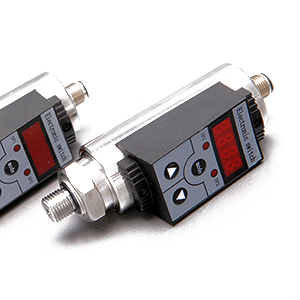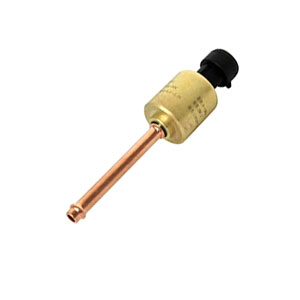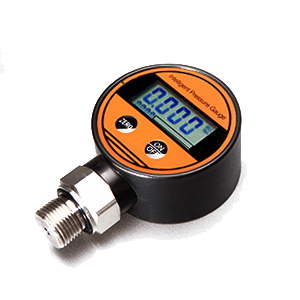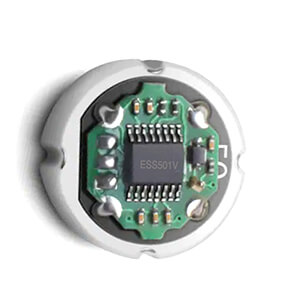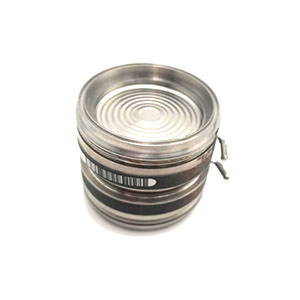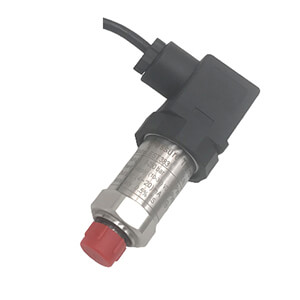What does Ingress Protection – IP stand for?
IP is an acronym “Ingress Protection”. It is a measurement of the protection an item will have against solid objects (dust, sand, dirt, etc.) and liquids. An IP rating is comprised of 2 numbers. The first number refers to the protection against solid objects (dust, etc) and the second number refers to protection against liquids.
What is an Ingress Protection – IP Rating?
Each IP rating has two numbers, both of which give you information about the protection level. A higher number means greater protection against solids and liquids.
- The first number (0-6) refers to the level of protection against solid objects and moving parts, such as dust, debris, or other solid matter.
- The second number (0-8) references the level of liquid and moisture protection.
Take a look at the chart below to better understand the protection offered with each number.
| First Digit: Solids | Second Digit: Solids | ||||||
| Level | Object size protected against | Effective against | Level | Object size protected against | Effective against | ||
 | 0 | Not protected | No protection against contact and ingress of objects |  | 0 | Not protected | - |
 | 1 | >50mm | Any large surface of the body, such as the back of the hand, but no protection against deliberate contact with a body part. |  | 1 | Dripping water | Dripping water (vertically falling drops) shall have no harmful effect. |
 | 2 | >12.5mm | Fingers or similar objects. |  | 2 | Dripping water when tilted up to 15° | Vertically dripping water shall have no harmful effect when the enclosure is tilted at an angle up to 15° from its normal position. |
 | 3 | >2.5mm | Tools, thick wires, etc. |  | 3 | Spraying water | Water falling as a spray at any angle up to 60° from the vertical shall have no harmful effect. |
 | 4 | >1mm | Most wires, screws, etc. |  | 4 | Splashing water | Water splashing against the enclosure from any direction shall have no harmful effect. |
 | 5 | Dust Protected | Ingress of dust is not entirely prevented, but it must not enter in sufficient quantity to interfere with the satisfactory operation of the equipment; complete protection against contact. |  | 5 | Water jets | Water projected by a nozzle (6.3mm) against enclosure from any direction shall have no harmful effects. |
 | 6 | Dust Tight | No ingress of dust; complete protection against contact |  | 6 | Powerful water jets | Water projected in powerful jets (12.5mm nozzle) against the enclosure from any direction shall have no harmful effects. |
 | 7 | Immersion up to 1m | Ingress of water in harmful quantity shall not be possible when the enclosure is immersed in water under defined conditions of pressure and time (up to 1 m of submersion). | ||||
 | 8 | Immersion beyond 1m | The equipment is suitable for continuous immersion in water under conditions which shall be specified by the manufacturer. Normally, this will mean that the equipment is hermetically sealed. However, with certain types of equipment, it can mean that water can enter but only in such a manner that it produces no harmful effects. | ||||
With an IP65 rating, for example, EST310 piezoresistive pressure transmitter will be used in an outside setting and are water-resistant but they are not waterproof and are not suitable to be submerged. An IP68, i.e ESL048 Digital Liquid Level Transmitter, can be submerged in water.
| IP Number | First Digit - SOLIDS | Second Digit - LIQUIDS |
| IP60 | Protected from total dust ingress. | Not protected from liquids. |
| IP61 | Protected from total dust ingress. | Protected from condensation. |
| IP62 | Protected from total dust ingress. | Protected from water spray less than 15 degrees from vertical. |
| IP63 | Protected from total dust ingress. | Protected from water spray less than 60 degrees from vertical. |
| IP64 | Protected from total dust ingress. | Protected from water spray from any direction. |
| IP65 | Protected from total dust ingress. | Protected from low pressure water jets from any direction. |
| IP66 | Protected from total dust ingress. | Protected from high pressure water jets from any direction. |
| IP67 | Protected from total dust ingress. | Protected from immersion between 15 centimeters and 1 meter in depth. |
| IP68 | Protected from total dust ingress. | Protected from long term immersion up to a specified pressure. |
| IP69K | Protected from total dust ingress. | Protected from steam-jet cleaning. |
| 1. IEC 60529, “degrees of Protection Provided by Enclosures (IP Codes),” Ed. 2.1 (Geneva: International Electrotechnical Commision, 2011) | ||
| 2. IEC 60529 (Ed. 2.1), clause 4.1. | ||
What is the difference between IP65, IP67 & IP68?
The differences between commonly sold IP65, IP67, & IP68 strips are slight, but very important. Using the above chart as a guide, we can see that all strips are protected at the highest level from solids and dust. The variations come with the protection against liquids.
- IP65 = Water resistant. “Protected against water jets from any angle” *Do NOT submerge IP65 LED lights, these are not waterproof.
- IP67 = Water resistant plus. “Protected against the events of temporary submersion (10 minutes)”*Do NOT submerge IP67 LED lights for extended periods, these are not waterproof.
- IP68 = Waterproof “Protected against the events of permanent submersion up to 3 meters”
What IP Rating Will You Need?
If you don’t anticipate a harsh environment that is extremely dusty or wet then a lower IP rating would suffice.
In places that will have a lot of dust, debris, or potential to be in contact with any solids or liquids, you’ll want to make sure that the IP ratings are high and that you have adequate water resistant or waterproof coatings on your LED strip lights.
| Examples of IP Ratings and Uses | |||
| Low IP ratings are appropriate for | High IP ratings are appropriate for | ||
| 1 | Indoor use | 1 | Unsealed outdoor locations |
| 2 | Protected use inside sealed products | 2 | Places that have a lot of debris |
| 3 | Inside sealed signage | 3 | Areas with heavy foot traffic |
| 4 | When using aluminum extrusions | 4 | High splash areas |
| 5 | High contact areas (people touching them) | ||
| 6 | Wet locations | ||
IP ratings are crucial bits of information detailing exactly how protected your sensor is from dust and water. IP stands for “Ingress Protection,” and serves three purposes:
- Keeps people from accessing hazardous parts inside the enclosure
- Prevents the ingress of solid objects
- Protects against the ingress of water
In a nutshell, an IP rating protects a pressure sensor from its biggest threats. So what does it mean if your digital pressure sensor is missing this critical protection rating? What are the risks of going with a cheaper sensor that doesn’t protect itself from dust and water?
The risk is simple: failure. If you purchase a sensor without an IP rating, any dust or water present can work its way into the electronics of your gauge. Unfortunately, pressure sensor are often used in pretty dirty and damp environments.
Of course, if you install your sensor in a clean and dry area, you probably don’t need to worry about IP ratings at all. Like everything else, the application is king.
First Digit – Solids
The higher the first digit of the IP rating number the better the protection from dust, sand or dirt particles penetrating the outer enclosure and damaging the internal components.
For example if you are going to use a pressure transmitter on an oil refinery in the middle of the desert you would want a very high protection against sand ingress, but if you were going to use it inside a clean room inside a silicon chip manufacturing facility you would only need a very low-level of particle ingress protection.

Second Digit – Liquids
The higher the second digit of the IP rating number the better the ingress protection from water moisture leaking inside and corroding components or shorting out electrical & electronic circuits.
For example if you wanted to immerse pressure transducers in the ocean to monitor the sea depth you would need very high integrity water-proofing, but if you were looking to fit pressure transmitters to an air compressor in a location with a low relative humidity you would only need a very low-level protection against fluid penetration.
Please note that the 2 digit IP ratings do not provide any indication of how protected a pressure sensor or instrument will be from impacts or exposure to corrosive fluids and either of these might compromise the integrity of the IP rating if they have not be taken into account.
Evaluating Your Application
To determine what IP rating you need, if any, you need to look past the obvious sources of dust and moisture. Ask yourself:
- Is dust and moisture a concern where your pressure sensor will be installed?
- Are there leaky pipes and pumps?
- Is there a possibility of a spill or an overflow?
- Will the area be cleaned regularly?
| Examples of items with IP ratings | ||
| 1 | Umbrella | IP-01 or IP-02 |
| 2 | Chain-link fence | IP-02 |
| 3 | Chicken wire | IP-20 |
| 4 | Screen | IP-30 |
| 5 | Kevlar cloth | IP-40 |
| 6 | Tent (camping) | IP-42 |
| 7 | Saran wrap | IP-51 |
| 8 | Bottle of wine | IP-67 |
| 9 | Submarine | IP-68 |
You need to take a look at all the possibilities. If there are any concerns, you should play it safe and get a digital pressure sensor with an IP rating that’s up to par.
This doesn’t mean you should always buy a fully protected sensor at the slight possibility of an accident or a leak, but you should at least understand the risks and rewards of your decision.
Pressure measurements are important. Pressure has to be maintained at safe levels that are sufficient to keep things moving efficiently. Using pressure sensor to take a differential reading on a pump, a length of pipe, or a filter is a common practice that is critical to system health and reliability.

